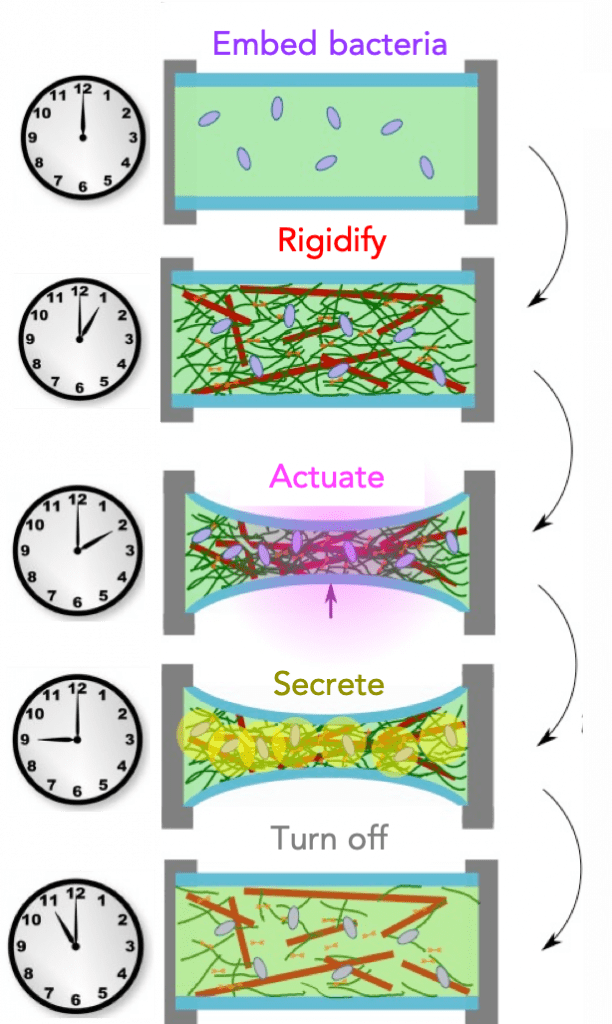Michael Rust, PhD, Associate Professor of Molecular Genetics & Cell Biology and Physics, is working with a team of researchers who were recently awarded a $1.8 million grant from the National Science Foundation (NSF) to design and create next-generation materials inspired and empowered by biological cells.
Rae Robertson-Anderson PhD, chair and professor of physics and biophysics at the University of San Diego will lead the team of physicists, biologists, and engineers, including Rust, Prof. Megan Valentine at the University of California Santa Barbara, Prof. Jennifer Ross at Syracuse University, and Prof. Moumita Das at the Rochester Institute of Technology.
The team’s goal is to create self-directed, programmable, and reconfigurable materials — using biological building blocks including proteins and cells — that can produce force and motion. This research could pave the way for future materials applications ranging from self-healing bridges and self-propulsive materials to programmable micro-robotics, wound healing, and dynamic prosthetics.
“Living cells can sense and adapt to their environment in ways that are difficult to achieve with our human-made designs,” Rust said. “We think there’s a great opportunity here to incorporate biological components into materials to create objects that can autonomously act to change shape, assemble, disassemble, and do work without being supervised.”

Engineered bacteria cells and proteins activate materials to stiffen, compress, soften and re-expand on a programmable schedule without human intervention. These autonomous Biotic-Abiotic Materials (BAMs) can revolutionize sectors ranging from infrastructure to health care.
The four-year grant will also allow for undergraduates at each university to gain hands-on collaborative research experiences, mentoring, and professional development opportunities. At the end of the project, the team will have built the framework for their materials design concept, including a small prototype, that can help others to advance futuristic materials to accomplish the many processes that living systems already perform seamlessly, such as healing and regulating themselves.
“We have assembled a top-notch interdisciplinary team of researchers from across the country that bring unique perspectives and expertise to make these research ideas become a reality. This project is a key example of the power of a collaborative team approach to research that is driving scientific discovery and is required to solve the many current pressing problems facing society — including those that demand new materials,” said Robertson-Anderson.
Adapted from a press release provided by the University of San Diego.

